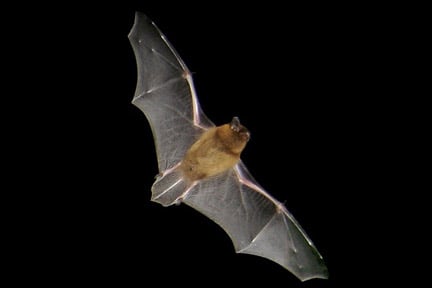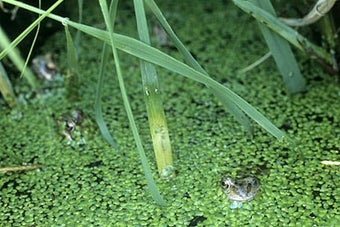
Quick facts
Suitable for - Encouraging bats and providing insect food
Timing - March to October
Difficulty - Easy
Which bats occur in gardens?
There are 17 species of bats breeding in Britain. The more common species that use gardens for feeding or daytime shelter are the common pipistrelle, soprano pipistrelle, brown long-eared bat, noctule and Daubenton's bat. Other species can also be present. Bats are recognised indicators, their presence an indication of a healthy, insect-rich environment.
What do bats need?
Food
All British bats feed on insects, particularly those types that are active at dusk and during the night. In addition to moths, bats eat other insects, such as mosquitoes, midges and other flies, mayflies, some beetles, caddis flies, lacewings and other nocturnal insects. Bats mostly catch insects on the wing, using echo location to home in on their prey. They can sometimes be seen hunting around a light source where there is often a higher density of moths but the long term impacts of artificial lighting on wildlife (prey and predator) are not usually positive. Some bats will pick off insects that are resting on foliage.
Shelter
During the day, bats shelter in dark places (roosts), such as in hollow trees, roof spaces, under tiles and soffits, loose on trees, or in splits in the trunks and branches of trees. At different times of the year, bats will move between several resting places that are used as daytime roosts, maternity roosts where females give birth and nurse their young, and hibernation sites for the winter months.
Water
Some bats, such as Daubenton's bat, specialise in swooping low over ponds and other water bodies where they feed on insects such as adult caddis flies, mayflies and other insects with aquatic larvae.
Linear features
Linear features in the landscape, such as hedges and streams, are important for bats, both as feeding areas and navigation pathways that are used by bats as they travel between roosting sites and feeding areas.
What can be done to make a garden more bat-friendly?
Increase the food supply
- Certain garden features, such as heaps and ponds, are particularly good at generating the types of insect that bats like
- Grow plants with flowers that are likely to attract moths and other night-flying insects. White or pale coloured flowers are more likely to be seen by nocturnal insects
- Be more tolerant of insects in your garden. A few caterpillars will not cause much damage but they will turn into a juicy meal for a bat
- Avoid using
Provide shelter
- Bats will generally find their own places to shelter but bat boxes can be placed on tree trunks or walls of buildings. Bat boxes can be purchased from garden centres or made from unplaned wood that has not been treated with wood preservatives
- Unlike birds, bats seek warm sheltered places in summer. When placing bat boxes, choose locations with a sunny southerly or westerly . Avoid placing boxes above doors or windows, or anywhere that the bats might be disturbed by people or pets
- Be aware of the sorts of places that bats use as shelter and do not disturb them
- Retain old trees with cavities in the trunk, loose or splits in the trunk or branches if safety considerations permit
Problems
All bats in Britain are legally protected. This protection extends to the places where bats roost or hibernate. Check if bats are in residence when building works are being planned or tree surgery is required.
Advice on dealing with bats in these situations can be obtained from the Bat Conservation Trust or from most county Wildlife Trusts.







